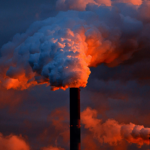
Carbon Prices Recover as EU Proposes Deep Reforms to Energy Markets
3 Min. Read Time
For the last six months, Europe has been in the grip of the most severe energy crisis in 50 years, as sanctions against Russia after its invasion of Ukraine have led to the suspension of gas deliveries from Russia to the EU.
As flows of natural gas through the Nord Stream 1 pipeline dwindled and finally stopped altogether at the end of August, European prices for front-month natural gas have rocketed from €60-80/MWh at the start of 2021 to more than €300/MWh last month.
Carbon prices also soared to a new record in tandem with energy markets; EUAs reached a new high of €99.22 in mid-August but dropped to around €66 beginning of September as the markets cooled off.
The sell-off reflected, to a certain extent, the market expectations related to the RePowerEU package, a set of initiatives to facilitate Europe’s move away from Russian fuels that would be funded in part by sales of €20 billion worth of surplus EUAs taken from the market stability reserve, as well as a darkening outlook for industrial output as inflation rises.
Most recently, however, EUA prices have bounced back as the wider energy market takes a positive view of Europe’s efforts to secure energy supplies for the winter, which may alleviate pressure on industrials to cut output to save gas and thereby support demand for EUAs.
The European Commission and Council of member states have worked feverishly to develop relief measures to shield consumers and businesses from the impact of high energy costs, as well as to diversify the bloc’s sources of energy. Until last year, Russian gas made up around 40% of the EU’s supply.
The main routes to energy diversification were laid out in March:
- reducing the overall reliance on fossil fuels
- diversifying energy supplies and routes, including for liquefied natural gas
- speeding up the development of renewables and hydrogen
- improving interconnections between EU energy networks
- increasing energy efficiency
Member states also hatched a plan to speed up the replenishment of natural gas storage after last winter, in order to secure adequate supplies this year without relying on Russia. The Commission set a target of refilling storage to 80% of capacity by the start of November, a goal that has already been reached.
Governments have also agreed to voluntarily cut overall EU demand for gas by 15% between August and March 2023, though if the goal is not achieved, the Commission will have the power to oblige member states to make reductions, focusing on non-domestic use.
Energy prices are starting to come down as additional actions are outlined
But the Commission isn’t satisfied with these measures, and on Sep. 14 its president Ursula von der Leyen outlined additional actions that will target price volatility in wholesale markets as well as the way in which Europe prices gas and power.
Von Der Leyen said that the main European gas benchmark, the Dutch Title Transfer Facility (TTF) market, “has not adapted” to the move away from Russian pipeline gas to LNG imports.
“This is why the Commission will work on establishing a more representative benchmark,” she said, without offering any additional details.
The EU executive will also develop new rules on collateral for derivatives trading, in order to relieve the financial burden that is causing some large EU companies to seek additional funding. With energy prices at such high levels, maintaining hedges against future deliveries requires ever-greater collateral, and this is straining many participants’ finances.
Energy prices have started to come down in recent weeks as the sheer breadth of the bloc’s response to the crisis becomes more apparent. Front-month TTF gas prices have come off their August highs and are now just above €200/MWh, while prompt German power has fallen back from nearly €700/MWh to just below €400/MWh.
While the Commission embarks upon its market reforms, Parliamentarians are preparing to resume work on the RePowerEU package. MEPs are set to discuss the package and vote on amendments over two meetings at the end of September and early October.
One controversial amendment would see the EUAs sold within a one-year period, forcing prices down, though those surplus EUAs would be withdrawn from the market by the MSR in subsequent years, maintaining the market supply balance over the course of the 2021-2030 trading period.
Traders will now be waiting for developments around the EU’s energy market reforms outlined this week, as well as the ongoing discussions over funding the switch away from Russian fuels.










